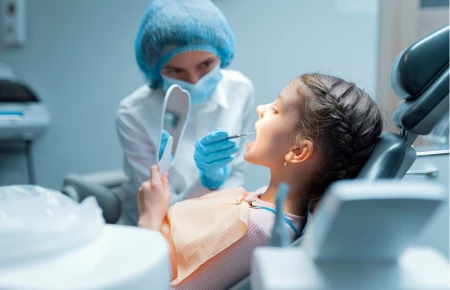What are the Types of Sedation Dentistry

Sedation Dentistry
Sedation dentistry is an application that is carried out with the same aim as anesthesia but differs from it in means of the way it is applied. Although there are a variety of different types of sedation dentistry, the main description is that the application consists of giving oral medication to the patient to put them to sleep. The patient doesn’t feel any pain or discomfort while they are under sedation, but they can still move their body parts and respond to their dentist’s directions.
What are the types of sedation dentistry?
Although there are various types of sedation dentistry, there are three main methods that are used by most dentists. These are:
- Nitrous Oxide Sedation
Nitrous Oxide, which is also widely known as “Laughing Gas”, is one of the most used sedation dentistry methods. In this method, nitrous oxide is inhaled through an inhaler mask, and the gas starts showing its effects in about 5 minutes. While under nitrous oxide sedation, you won’t feel any pain or discomfort. Nitrous oxide sedation is mostly preferable since its effects wear off pretty quickly, about a few minutes after you are given pure oxygen to clear off the effects of the gas. Nitrous oxide usually doesn’t cause any after-effects, which means you can go to work or drive yourself home right after the procedure.
- Oral Conscious Sedation
Oral conscious sedation, which is the most common sedation dentistry method, is the application in which the patient is given a pill or syrup to sedate the body. The medication shows its effect in about 45 to 60 minutes after taking it. While under sedation, the patient usually feels very sleepy, and may even fall asleep. However, their consciousness will still be open, and they will be able to respond to their dentist’s questions or directions. Since oral conscious sedation has temporary effects on the patient’s memory and motor skills, the patient needs someone to drive them home after their procedure.
- Intravenous Sedation (IV Sedation)
Intravenous sedation is the most effective method of sedation dentistry. It has the deepest effects, and is mostly used during more serious procedures, or on patients that are anxious about their procedures, to help them sleep during the procedure. IV Sedation is applied directly through the patient’s veins, and the patient’s heart rate is monitored under sedation to make sure that everything is OK during the procedure. Patients under IV Sedation usually don’t remember much about their procedures once they wake up, so this method is pretty useful for patients that are anxious. The patient needs someone to drive them home after the procedure when IV Sedation is used, since this sedation method uses really powerful chemicals, and there are some side effects after the sedation wears out.
To learn more about sedation and ask your questions, give us a call at 248-650-2440 or visit our dental clinic






